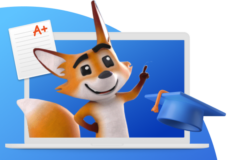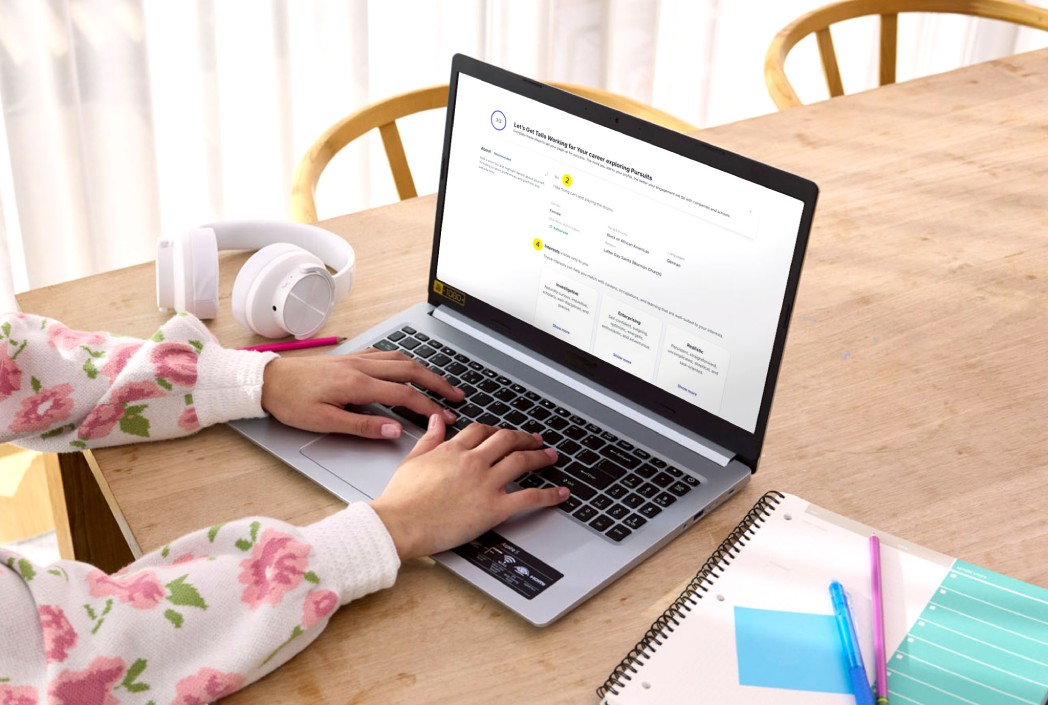By: Sophia H., 12th grade student and SAC intern
As high school students, we’re preparing to enter the working world. Now is the time to build experience and learn how things work in the professional sphere so we’re not overwhelmed once we take the first steps toward a career after graduation.
One of the biggest assets you’ll have diving into your career is your résumé. There are many opportunities to learn about student résumé design and portfolio building, but this can also feel overwhelming with the vast amount of information available. So, I’m going to share my experience with high school résumé tips and tricks about what has worked for me in hopes it might help other high school students get started.
Let Me Introduce Myself
Why should you listen to my résumé tips? Good question. I’m a high school senior about to graduate after spending four years enrolled in a K12-powered online school. I have already used my résumé in several applications for jobs I’ve gotten. One of those is my current position as a Student Advisory Council intern working in marketing and media management for K12. I also have a position working at a preschool and have experience in retail.
What are the first steps in writing a résumé?
The most important thing for résumé writing is having something to put on your résumé. I encourage students to look now for activities that can build skills and gain experience. This can provide a great head start for later career opportunities that ask for prior experience. And what you write on your résumé isn’t limited to only actual jobs. You can include volunteering, internships, and job shadowing. If you take charge in your clubs and extracurriculars at school, you can include leadership skills.
Taking courses that interest you in different fields can also help you find different skills you should be learning for certain careers. Once you know them, you can start to find out how to add those to your toolbelt so you can add them to your résumé too.
These are all activities that will prepare you for your future life goals, not to mention looking great on your résumé. Some K12-powered schools offer college and career prep classes that focus on career readiness for teens. These classes provide teens with the knowledge and experience to explore various careers that interest them. All of these are great first steps to writing your résumé.
Student Résumé Design, Do It Yourself
Once you have the information to write on your résumé, you can focus on design. If you thrive in creative spaces, I recommend using your creative expertise to design your résumé in a way that speaks to you and reflects who you are. Of course, there are a few rules you might want to follow for an effective résumé.
- Keep it to one page. Employers and talent acquisition find it easiest to view your information if it is summarized on a single page.
- Use a clear, easy-to-read font. A clear font will make it easier to understand and ensure there isn’t any confusion about what is being said. Making sure there is white space also helps with readability.
- Use action words that draw attention. Make sure you are very clear in what you are trying to say and draw out attributes that work for the particular job you are applying for. Vary the verbs you use too when describing what you’ve done—you’ve worked, helped, assisted, collaborated, led, organized, researched, etc.
- Make it organized. Everything should be in logical order, easy to navigate, and not have messy graphics or distracting colors. You want readers to be able to see your value right away.
Even with the résumé rules, feel free to let your personality shine through. You want to stick out, so let your résumé showcase your authentic self. This is my preferred way of creating a résumé, all the résumés I have submitted so far were ones that I designed myself.
Student Résumé Design, With Guidance
If creativity (or formatting) is not your strong suit, don’t worry! There are many places to find teen résumé templates that can help you organize your experience in a way that displays information in a way that still adheres to the guidelines listed above. If you’re more of the DIY type but need some ideas on how a résumé should look, you can look up high school résumé examples. There are also resources, such as résumé builders for students, which can aid in the entire process of building a résumé.
What to put on a résumé?
As a student, people don’t expect your first résumé to be filled with years of job experience. But there is still a lot of valuable information that can be included on a résumé. For example:
- Do you have experience with computer programs? Excel, Word, Canva design, coding, anything that can be applied to the job you’re applying for is useful to list.
- Have you attained soft skills such as leadership, organization, problem-solving, and teamwork? Mentioning these kinds of skills is a great way to highlight how you’d approach the work responsibilities.
- Have you participated in clubs or events that strengthen those skills? If you’ve been captain of a team, led discussion groups, done volunteer work, or participated in a club, write it down.
These are all things that strengthen a résumé and showcase your abilities as they pertain to a workplace. Many employers place a high value on soft skills, like communication and collaboration, because they demonstrate how people will approach and complete the required work.
High School Résumé Tips and Tricks
Here are a few tips and tricks to help you create and level up your résumé. These are all things I learned over the years of working on and refining my résumé, including information I have developed from K12 college and career classes, tips from career coaches, and my experiences in the job application process.
- Tailor your résumé. Point out skills and experience that are specifically relevant to the job you’re applying for, so employers know you’re interested enough to have done the research and know you have what it takes to do the work.
- Make copies. Have both physical and digital copies, and make sure to save them in multiple formats, as different application sites have varying requirements.
- Be true to yourself—and truthful. You don’t want something on your résumé that you cannot back up in an interview or while actually working that job. You only want a job that is actually the right fit for you.
- Edit and proofread. Before you submit your résumé (each and every time), check to make sure there aren’t any errors or typos from copying and pasting over from an older version.
- Introduce yourself. Don’t let your résumé be just facts and figures about your job experience. Give an idea of who you are and what you like. This helps convey the personality of the individual being considered for a role.
Tallo – A Résumé Building Tool
I personally have used Tallo for years. I learned about it through K12 and have since used it to build my résumé, find job opportunities near me, connect with peers who share similar interests, and meet with career coaches who have helped me reach all aspects of career building. Using Tallo as a tool helped me feel more confident when submitting job applications.
If you’re a parent of a teen, you can support and encourage your student to pursue learning in this space. Directing them to sites like Tallo can be a great starting point to spark interest in résumé and career readiness activities. Students can create a free account with Tallo for a more personalized experience. And numerous resources and features can be accessed without an account.
The Importance of Résumé Building
A résumé is like your personal introduction to your prospective employer and the working world. It’s how they get a sense of who you are and why you might be a fit for that job. In the job market today, it is more important than ever to stick out, and that is exactly what a good résumé will help you do.
Taking the time to learn about the career world really helped ease my anxiety and made me feel very prepared to pursue a career with confidence. To the point that I am now maintaining two part-time jobs and a summer internship.
These are just a few tips from my personal student career journey. I hope they can help you create or update your résumé, turning it into something that will catch the attention of employers and showcase all that you have to offer.
Remember, even as a student still in high school, you have the ability to excel in a career. You can do anything you are determined to do.
Ready to write your résumé?
You can find career tips like this for building your résumé and so much more on Tallo.
Sophia is a 2025 student at a K12-powered school in MO, and their statement reflects their experience at their school.







